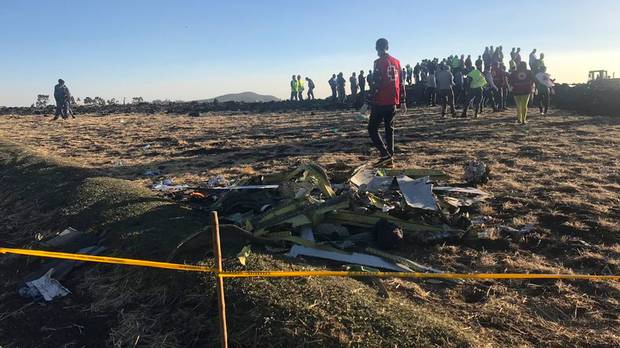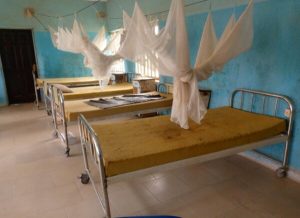Tears and tributes flood the Ethiopian Airlines crash site

It takes just a few minutes for a Boeing 737 MAX 8 plane taking off from Bole international airport in Addis Ababa to pass over the rolling teff and corn fields near Bishoftu.The shepherds and farmers here don’t really pay the planes much attention.That is, until Ethopian Airlines ET 302 came crashing down from the sky, killing all 157 people on board.The car journey toward the crash site from the capital shifts from a three-lane highway to a winding dirt and rock track past farming homesteads and villages. Passing a donkey cart, the driver points toward a hill covered with Eucalyptus trees. There, in the distance, a crowd of people stand on the hillside, watching the movement of heavy machinery work through the debris.The new Boeing 737 MAX 8 slammed into this hillside with such ferocity that at first, it seems to have all but vanished. Small shredded sections of riveted green fuselage lie scattered in a debris field.But the industrial diggers do their work, inexorably, reclaiming twisted silver engine parts, a shredded tire, electronics — dumping them in a small pile next to the crater. Ethiopian Red Cross officials gingerly pick through the rubble in their red jackets, face masks and surgical gloves — some carrying white plastic zip-up bags. They’re mostly silent as they work.Those on the flight came from across the world; many were drawn to East Africa as aid workers. Others were on business, or flying home to surprise their families with a visit.Their papers and plans swirl into the air in gusts of hot wind — blowing beyond the boundaries of the crash site, marked with yellow police tape.Tadu Gerechu was tending his sheep when he heard the roar of the plane overhead. He said it seemed in trouble, with flashes of flames coming out of its back. “There was a huge explosion and smoke,” he says. “We ran to the scene — about 20 of us — but there was nothing we could do for these people.”Local government militia with AK-47s and the federal police stand guard outside the perimeter, while forensic experts suit up in white hazmat suits.”When you find anything potentially important, raise your hand and the whole line will stop,” says the South African lead expert dispatched to accidents across the continent.A long line of men move shoulder to shoulder across the debris field. Bent over, they stop every few inches, running their fingers through the earth dotted with small parts of plane wreckage.A small group of Chinese businessmen and embassy officials come to the site to quietly pay their respects.They bow their heads and place a bowl of fruit, some bread and incense next to the perimeter tape. Buses drive families of victims down the long route from the Ethiopian capital to the crash site.Feisal Hussein had traveled with his uncle to the crash site from Embu, a small town near Mount Kenya, to try and find his father, Hussein Swaleh.Swaleh was well-known in Kenya as he once headed the Kenyan Football Federation.”All along we had thoughts running through our mind that it could be true or it could not be true,” says Hussein. “People are still crying back home and they will not cease until the burial is done,” he says, “because what we feel as a family is that our kin, our beloved dad, deserves a befitting sendoff.”White plastic now covers the plane sections. An archway of white roses and bouquets have been placed just outside the yellow tape.Families light candles and pray. They look around the hillside, taking in the place where their loved ones were lost. Some stand on the edge of the crater. In deference, the giant diggers are still. Local villagers who have been coming to the site for days stand respectively at a distance, the older women wear cotton shawls.Some cry. CNN’s Anna Cardovillis contributed to this report.







